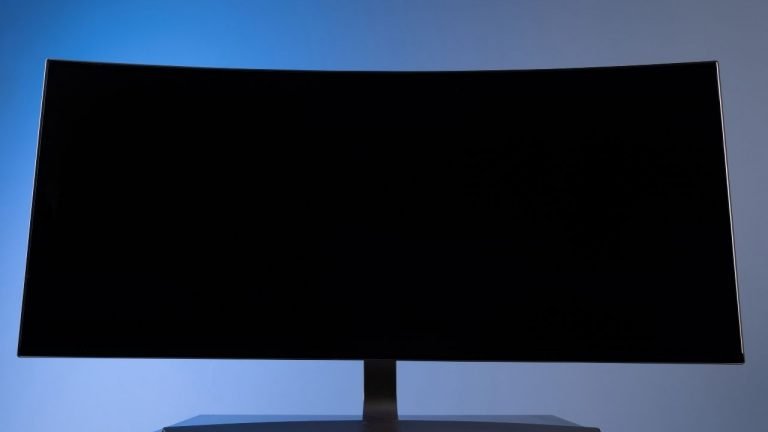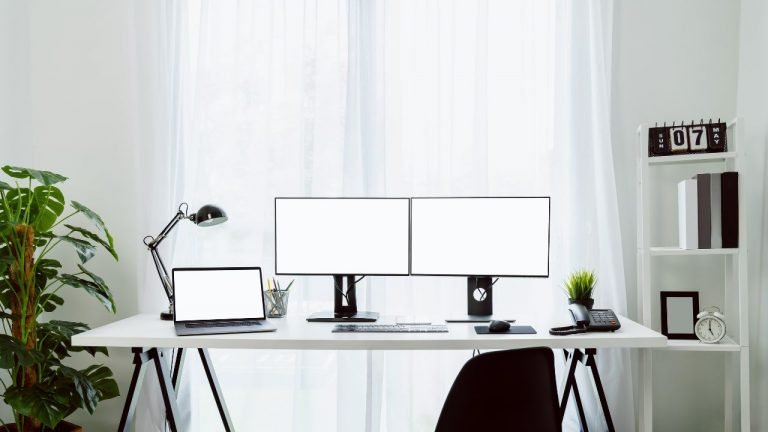Why Is My Dual Monitor Setup Not Working? [7 Reasons]
Dual monitors are productive, they have lots of advantages in doing multiple works. But the overall experience might get interrupted if your dual monitor stops working. Sometimes the problem might be in the plugs and sometimes it might need more attention in fixing it.
There are various reasons for your dual monitor setup to not work. Such as-
- If your operating system cannot recognize the monitors.
- If the cable connectors are not properly plugged.
- If your drivers are not updated.
- If the monitors are set at the wrong refresh rate.
- Wrong aspect ratios will also show “no signal”.
- One of the monitors cannot get power equally.
- Sometimes the monitors might be broken.
Dual monitors can give you enormous benefits and some amazing experiences with them. To ensure the best experience for you, we will discuss why your dual monitor setup is not working for you in this article.
So, let’s get started.
How To Detect The Problem?
Detecting the problem will solve half of your work. It is also crucial to take the necessary steps for further inspection. The first thing you want to do is check the connecting cables. Check all the cables that connect your monitor to your PC.
Also, check the power cables and see if both monitors are getting enough power or not. Power can be an issue if your power supply or power source is faulty.
Try to run the diagnosis. If you are using the windows operating system, you can easily run the windows diagnosis system to find out the issue.
Also, check if the monitor you are buying works fine or not. Sometimes sellers scam buyers with broken monitors, so keep your eyes open.
How Do I Get My Computer To Recognize A Second Monitor?
If your computer does not recognize a second monitor it can be a great hassle for you. Fortunately, there are some things you can do to get your computer to recognize a second monitor.
| Operating System | Solution |
|---|---|
| Windows 7 | Adjusting Display Settings 1. Open your control panel. 2. Then click Display 3. From there, click Adjust Resolution. 4. Here you will see the Multiple displays section, just select Extend these displays and then click apply. |
| Windows 8/8.1 | Changing Projection Mode 1. Hold down the windows logo and then press P 2. Here you will find all the projection modes, choose accordingly. Re-enabling display adapters 1. Hold down the Windows logo and then press R to open the Run box. 2. Type devmgmt.msc and press enter. 3. You will find Display adapters, from there choose your graphic card 4. Just right-click on your graphic card and select disable device. 5. After that again click on the graphic card and enable it. 6. After that, try to restart your PC and test your monitors. |
| Windows 10 | Forcing a second display to detect 1. Open the Settings option. 2. Click on the System. 3. Click on the Display. 4. Here you will find the Multiple Displays option, under that, click the Detect button Detecting wireless display 1. Open the Settings option. 2. Click on Devices. 3. Click on the Bluetooth & other devices. 4. Turn on the Bluetooth switch. 5. Click on the Add Bluetooth or other device 6. Select the Wireless display or dock options from there 7. Continue the rest of the setup according to the screen directions. |
| Windows 11 | Updating graphics driver 1. Open the Run box 2. Type devmgmt.msc 3. Click on Display Adapters 4. Click on your Graphic card 5. And select Update Driver |
What If Only One Monitor Works At A Time?
Examine the physical connection between the display and the video port on your desktop, laptop, or tablet. Try a different cable, as the issue could be a faulty cable or a faulty connector pin. Make sure to select the correct input if you’re using a monitor with multiple inputs.
If one monitor works at a time, then it could be an issue with the adapter that you are using to connect your monitor to your PC. Try reconnecting your monitors again and plug them properly. Also, check that you are using the same adapter that is needed to connect your monitor to your PC.
And also, if you are using a graphics card, see that both of your monitors are connected to your graphics card with the same adapter. Sometimes people don’t plug both the monitors and it creates the issue of one monitor not working.
How Do I Connect 2 Monitors To HDMI?
Get your HDMI cables first to get started. You can use HDMI cables if your PC and monitor both have HDMI ports. If your monitors have a DVI port, then you might need an adapter to connect it to your PC.
- Try to connect the HDMI cables to both monitors.
- Plug the other ends of the HDMI port into your computer
- Plug the power cord with a power source, I would recommend you use a good power supply.
- After turning your PC on, try adjusting your computer’s display settings.
Configuring Dual Monitors On Windows
Follow these steps to do so.
- Open the Settings options and choose the Display option.
- If your monitors are not detected, then click on the Detect button.
- You can choose which monitor you want to use as your main display when your displays have been recognized. Check the Make This My Main Display option after selecting the monitor you want to use as your main display. By clicking and dragging the displays in the Display settings panel, you may also change the order in which they appear.
- After that adjust your display resolution.
- To do that, from the Display menu click on the monitor you want to adjust and select the Display Resolution option, you can see the recommended option and select that.
- Once you are done a prompt will appear saying to keep changes. Click on it and you are done.
Configuring Dual Monitors On macOS
Follow these steps to connect your dual monitors on macOS.
- Open the System Preferences
- Click on the Displays.
- You will see your both monitors listed there, if not try to connect the plugs again properly.
- Click on the Arrangement tab. The display can be moved around to match the configuration of the monitors on your desk.
- Click the Mirror Desktops to enable the mirroring.
- Click on the Scaled option to change the display’s resolution. You can select a preconfigured resolution or even create a custom one.
Configuring Dual Monitors on Linux
Follow these steps to connect your dual monitors on Linus OS.
- Go to Control Panel and find Display settings.
- If your second monitor is not connected click Detect Displays button.
- After detecting your monitors, you will need to choose your primary monitor.
- You can set this in the Display options.
Connecting Dual Monitors With VGA to HDMI Adapter
If you have a PC or monitor with VGA output and you want to connect it do these steps.
- Get an adapter that can convert VGA to HDMI.
- Connect the VGA port with the HDMI port properly, sometimes they get to loosen up.
- Once you are set, connect the HDMI port to your monitor or PC.
Wrapping Up
Hope you have gone through all the sections. Dual monitors are fun and productive. Don’t let anything ruin your overall experience of using dual monitors.
Hope you found this article helpful, and with these solutions, you can easily detect and run your dual monitors.
So, let’s get started.




![Does Dual Monitor Use More CPU? [Debunking Common Myths]](https://homethereby.com/wp-content/uploads/2022/07/How-To-Setup-Dual-Monitors-With-L-Shaped-Desk-768x432.jpg)

![How Much Does A Triple Monitor Setup Cost? [Worth It?]](https://homethereby.com/wp-content/uploads/2022/08/How-Much-Does-A-Triple-Monitor-Setup-Cost-768x432.jpg)
